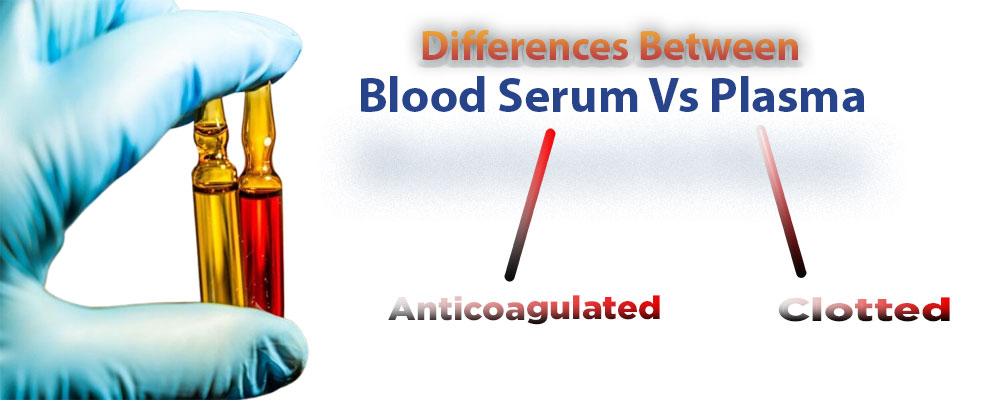As we know Serum or Plasma both come in the liquid part of the blood. That remains once the cells are removed, but that’s where the similarities end. Though they may look the same their roles are composition set them part.
So know full knowledge about Serum vs Plasma Difference below:-
Plasma is the yellowish blood part containing water, proteins, electrolytes, hormones, and clotting factors. It makes up about 55% of your blood and is important in transporting nutrients, hormones, and waste products throughout the body.
On the other hand, serum gets when clotting factors like fibrinogen are removed from the plasma. It is also a yellowish liquid that contains antibodies, hormones, and other proteins. The serum is commonly used to analyze glucose, cholesterol, and hormone levels.
To separate them, blood is placed in a centrifuge. With anticoagulants, you get plasma; without them, blood cots leave serum. Both Plasma and Serum Components work in harmony to keep your body functioning smoothly, making them vital and fascinating.

Plasma vs Serum Tubes: What’s the Major Difference?
When it comes to blood collection, the type of tube used can make a huge difference in collecting plasma Vs serum Difference, as both are essential medical tests, but tubes play a vital role in separating these blood components.
Plasma tubes: These tubes contain anticoagulants such as EDTA, heparin, or citrate to prevent blood from clotting. Once centrifuged, the liquid protein becomes plasma, which retains clotting factors such as fibrinogen. Plasma tubes are often used for tests requiring clotting analysis, such as coagulation or transfusion preparation.
Serum tubes: Serum tubes lack anticoagulants, allowing the blood to clot naturally. Centrifugation removes the clotting factors, leaving serum.
Choosing the right tubes ensures accurate results for laboratory diagnosis, highlighting the importance of this simple but vital tool in blood analysis.
Here is a table summarizing the differences between plasma tubes and serum tubes:
| Feature | Plasma Tubes | Serum Tubes |
| Anticoagulants | Contain anticoagulants like EDTA, heparin, or citrate to prevent clotting. | Do not contain anticoagulants, allowing blood to clot naturally. |
| Clotting Factors | Retain clotting factors, including fibrinogen. | Clotting factors are removed during clot formation. |
| Separation Process | Blood is centrifuged after preventing clotting | Blood Plasma Vs Serum is allowed to clot naturally before centrifugation. |
| Appearance | Yellowish but slightly hazy due to clotting factors. | Clear yellow liquid, free of clotting factors. |
| Uses | Ideal for coagulation studies, transfusions, and tests requiring intact clotting factors. | Commonly used for hormone analysis, glucose testing, and antibody detection. |
| Examples of Tubes | Lavender (EDTA), Green (Heparin), Light Blue (Citrate). | Red or Gold-top tubes (with or without gel for serum separation). |
Check the Full Process of How to Separate Plasma and Serum from Blood?
Serum is the liquid fraction of whole blood which is collected after the blood has coagulated. It is removed by centrifugation of the blood and the resulting supernatant, called serum. Then, carefully remove it using a Pasteur pipette. Plasma is then formed when the blood is collected in whole tubes which are treated with anticoagulants. Then plasma is produced and plasma tubes never coagulate in the blood. The cells are removed by centrifugation and what floats on the surface is called plasma. The plasma is carefully removed from the cell pellet using a pipette.
Why Are Enzymes Measured in Serum Instead of Plasma?
Enzyme measurements are best done in Blood Serum Vs Plasma. However, some enzymes, such as potassium-dependent enzymes, may be affected by anticoagulants in plasma. Therefore, serum is usually preferred for enzyme assays.
Why Are Plasma and Serum Important?
Plasma and serum are unique and irreplaceable in medicine and science. Plasma is used for treatments and transfusions, whereas serum is used for diagnostics and research. Together, they provide a comprehensive picture of a person’s health, aiding in early detection, treatment, and understanding of diseases.

Fun Facts About Plasma Vs Serum
Plasma’s Color: Plasma gets that yellowish color from the bilirubin byproduct of red blood cell breakdown.
Plasma Makes Up Most of Your Blood: It makes up around 55% of your total blood volume.
Serum in Cosmetics: The term “serum” in skincare, not referring to blood, was based on its concentrated and refined nature.
Lifesaving Plasma Donations: Plasma donations are used for the production of therapies for rare diseases, and thus, its donors are lifesavers who live in obscurity.
Advantages and Disadvantages of Serum vs Plasma
This can be decided upon Serum Vs plasma Tubes, depending on the research or healthcare purpose it is being applied for. The advantages and disadvantages of each can be weighed, depending on the application. Both have characteristics that make them more suitable for different tests, diagnostics, and experimental needs. Knowledge of these differences can help researchers and healthcare professionals make informed decisions tailored to their goals.
Which phlebotomy Tube Produces Plasma Vs Serum?
The different colored tops of phlebotomy tubes indicate the type of additive in the tube. For plasma, blue, green, or lavender-topped tubes are used because they contain anticoagulants. For serum, red or gold (also known as tiger) topped tubes are used because they do not contain anticoagulants.

